- Introduction to Easter Sunday
- Origins and Historical Background
- Easter Traditions and Symbols
- Intriguing Easter Facts
- Cultural Significance and Modern Observances
- Conclusion: The Eternal Spring of Easter
- Easter: Frequently Asked Questions (FAQs)
- 1. What Is Easter and Why Is It Celebrated?
- 2. How Is the Date of Easter Determined?
- 3. What Are Common Easter Traditions?
- 4. Why Are Eggs Associated with Easter?
- 5. Who Is the Easter Bunny and Where Did the Tradition Originate?
- 6. What Is the Significance of the Easter Egg Hunt?
- 7. Why Do People Wear New Clothes on Easter?
- 8. What Foods Are Traditionally Eaten on Easter?
- 9. How Do Different Cultures Celebrate Easter?
- 10. What Is the “Holy Week”?
- 11. Can Easter Be Celebrated by Non-Christians?
- 12. What Is the “Easter Vigil”?
- Easter: Frequently Asked Questions (FAQs)
Introduction to Easter Sunday
Easter, a festival awash with color, joy, and profound meaning, captivates hearts worldwide. As spring unfurls its beauty, Easter Sunday arrives, bringing with it a rich tapestry of traditions, historical depth, and spiritual reflection. This celebration, deeply rooted in Christian lore, also weaves threads from various cultures and epochs, presenting a fascinating story of rebirth, renewal, and redemption. In this detailed exploration, we embark on a journey to uncover the origins of Easter, its historical evolution, intriguing facts, and the multifaceted cultural significance that makes Easter a cornerstone of both religious and secular celebrations.
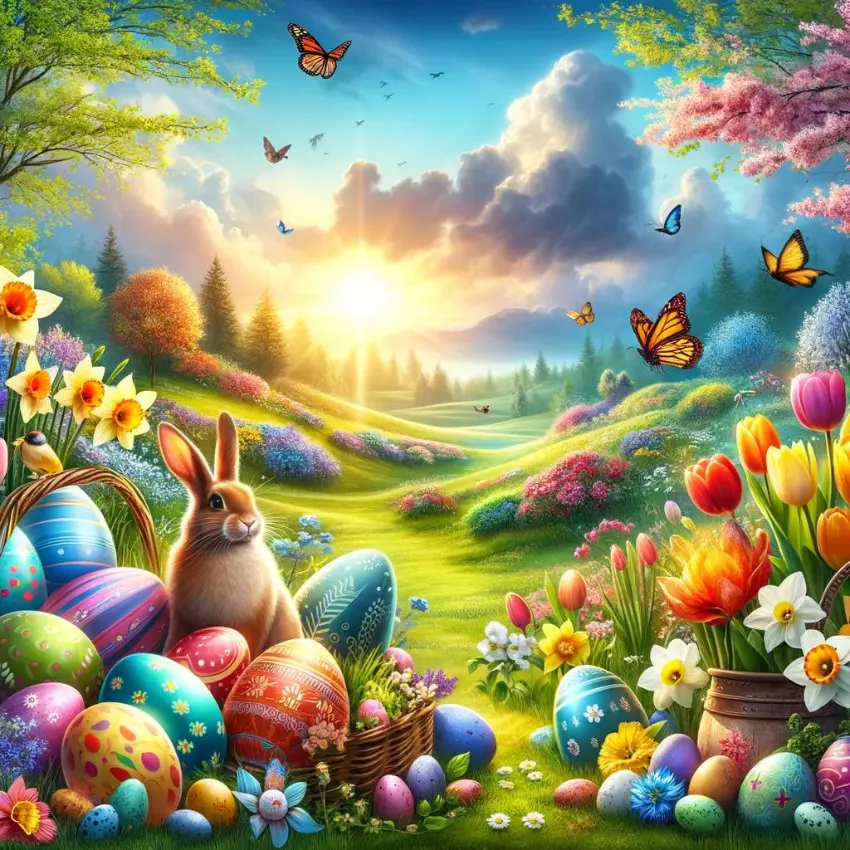
Origins and Historical Background
The Christian Celebration
At the heart of Easter lies the resurrection of Jesus Christ, an event that Christians believe occurred three days after his crucifixion. This foundational story underscores Easter as a time of hope and new life, symbolizing the victory of life over death. The term “Easter” itself, however, has a more eclectic heritage. Some sources suggest it originates from “Eostre,” the name of an Anglo-Saxon goddess of spring and dawn, highlighting the festival’s deep connections to themes of rebirth and renewal.
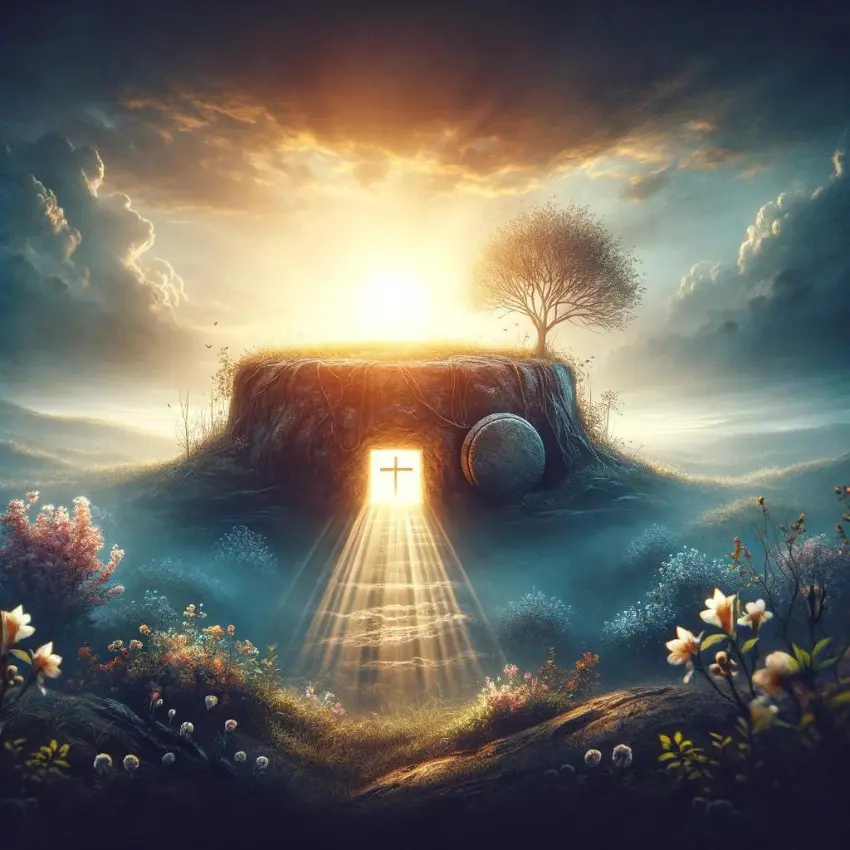
The Easter Date Conundrum
The determination of Easter’s date each year follows a complex lunar calendar, based on the first Sunday after the first full moon occurring on or after the vernal equinox. This method, established by the Council of Nicaea in 325 AD, ensures that Easter’s celebration aligns closely with the arrival of spring in the Northern Hemisphere, weaving it into the fabric of seasonal change and renewal.
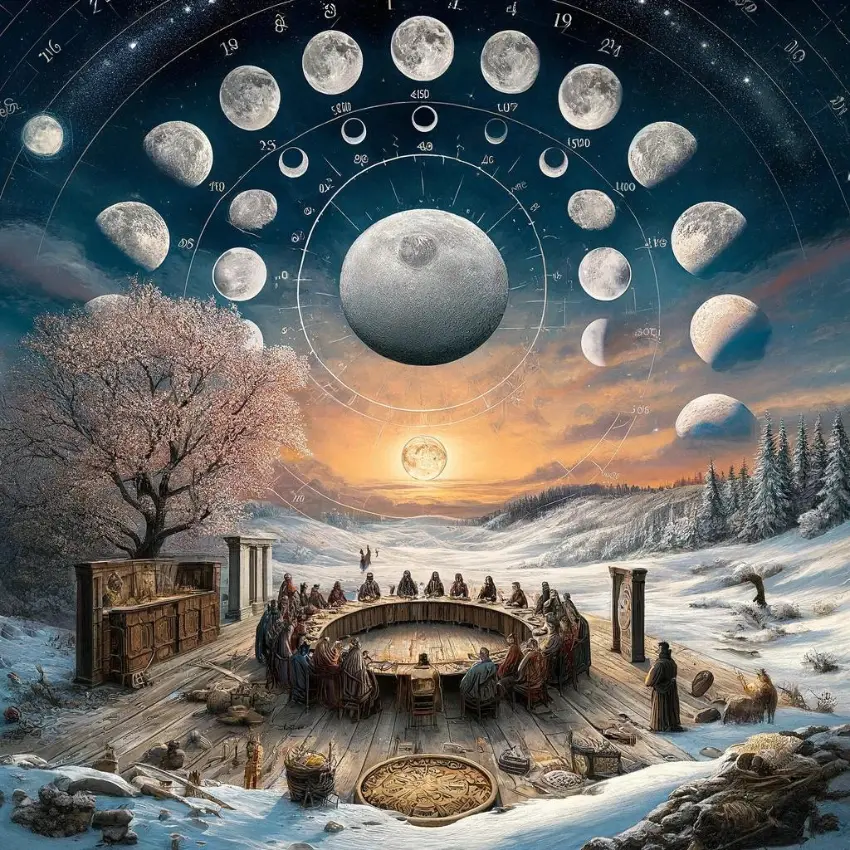
Easter Traditions and Symbols
Eggs and Bunnies: Symbols of New Life
Easter eggs and the Easter Bunny are among the celebration’s most recognizable symbols, each carrying layers of meaning. Eggs, with their hard shells enclosing life, symbolize new beginnings and the resurrection story. Decorating eggs has become an art form in itself, evolving from simple dyes to elaborate designs. The Easter Bunny, a figure rooted in German folklore, brings a playful element to Easter, symbolizing fertility and the abundant life of spring.
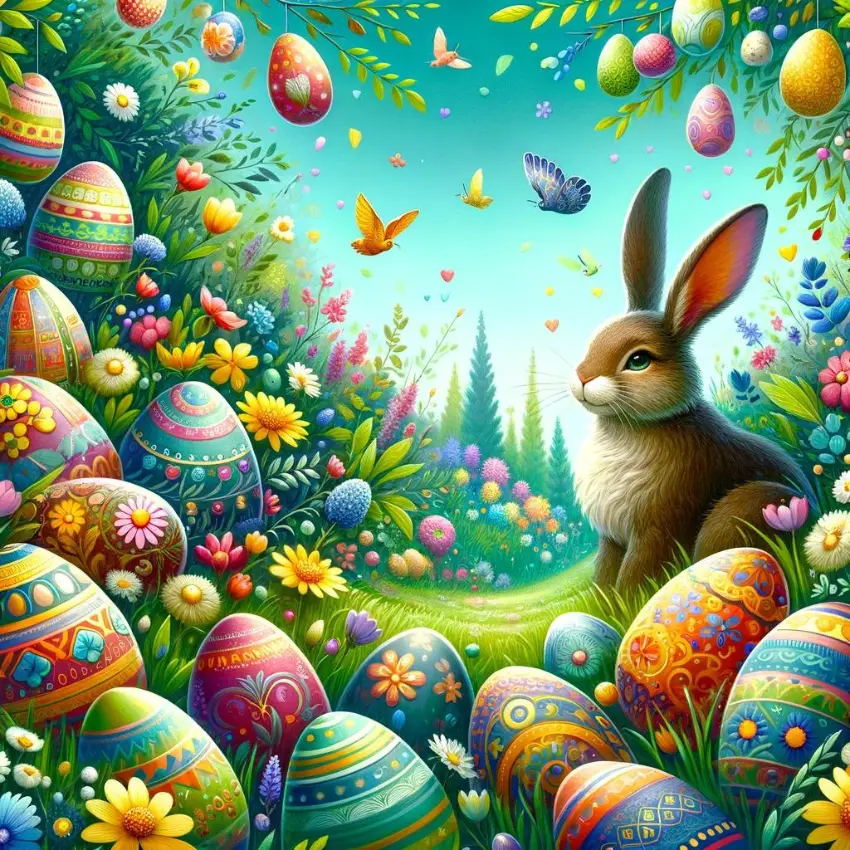
Worldwide Celebrations: A Tapestry of Traditions
From the solemn vigils and joyous church services of Christian observance to the colorful egg hunts and parades in communities around the globe, Easter is celebrated in myriad ways. Each culture adds its unique brushstroke to the Easter canvas, from the intricate art of Pysanka in Ukraine to the explosive “Scoppio del Carro” in Florence, Italy. These diverse traditions underscore the universal themes of joy, hope, and renewal that Easter represents.
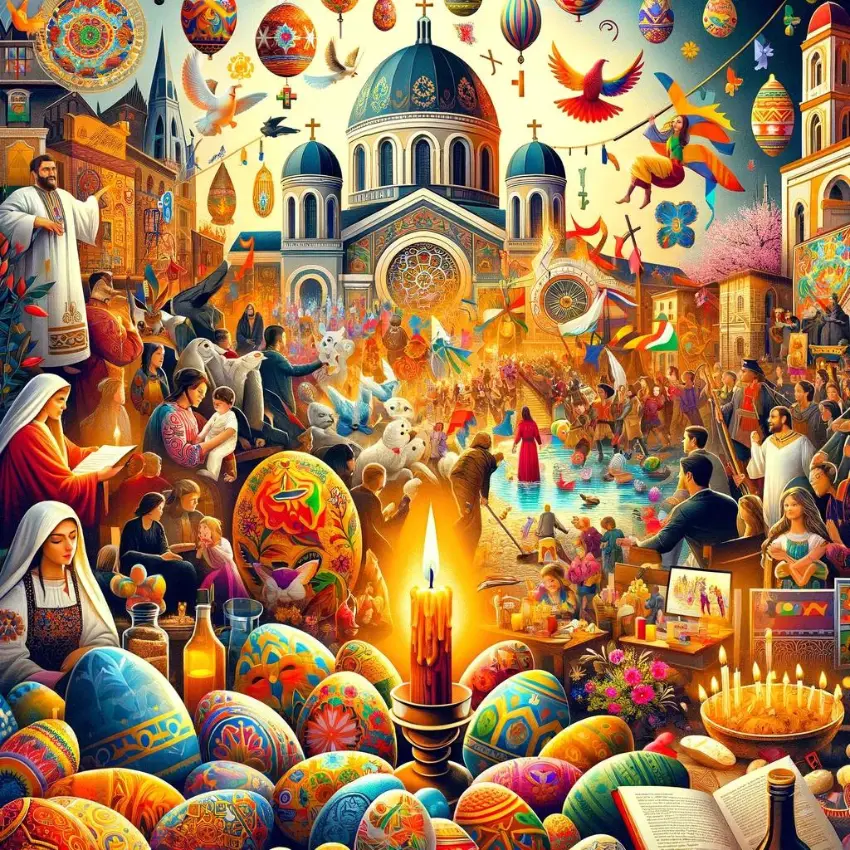
Intriguing Easter Facts
- The World’s Largest Easter Egg: In Vegreville, Canada, stands a gigantic Pysanka, a testament to the egg’s symbolic power and a marvel of artistic dedication.
- Easter and Fashion: The Easter Parade in New York City, originating in the mid-1800s, became a showcase for spring fashion, a tradition that charmingly persists today.
- The Diversity of Easter Foods: From the sweet richness of chocolate bunnies and Simnel cakes to the savory flavors of hot cross buns and lamb dishes, Easter cuisine reflects the celebration’s joy and diversity.
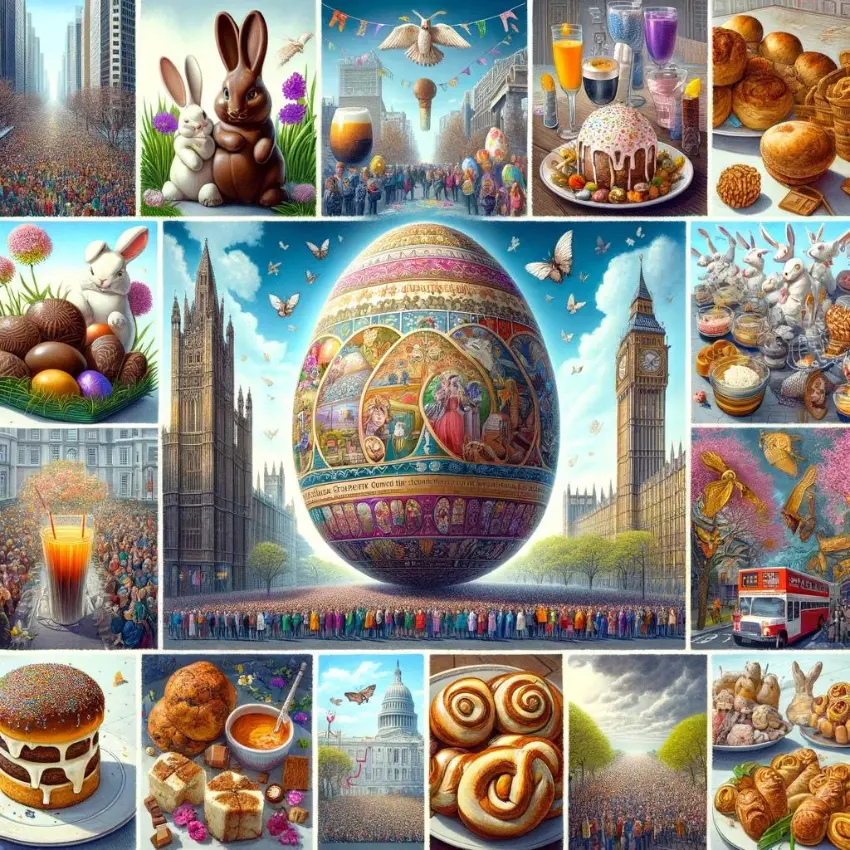
Cultural Significance and Modern Observances
Easter’s cultural significance transcends its religious roots, embodying universal themes of renewal, hope, and transformation. In the modern world, it offers a moment to pause, reflect, and celebrate life’s beauty and the potential for renewal in the human spirit. As families and communities come together, Easter’s enduring message of hope and joy resonates more deeply, reminding us of the cycle of life, rebirth, and the enduring power of love and faith.
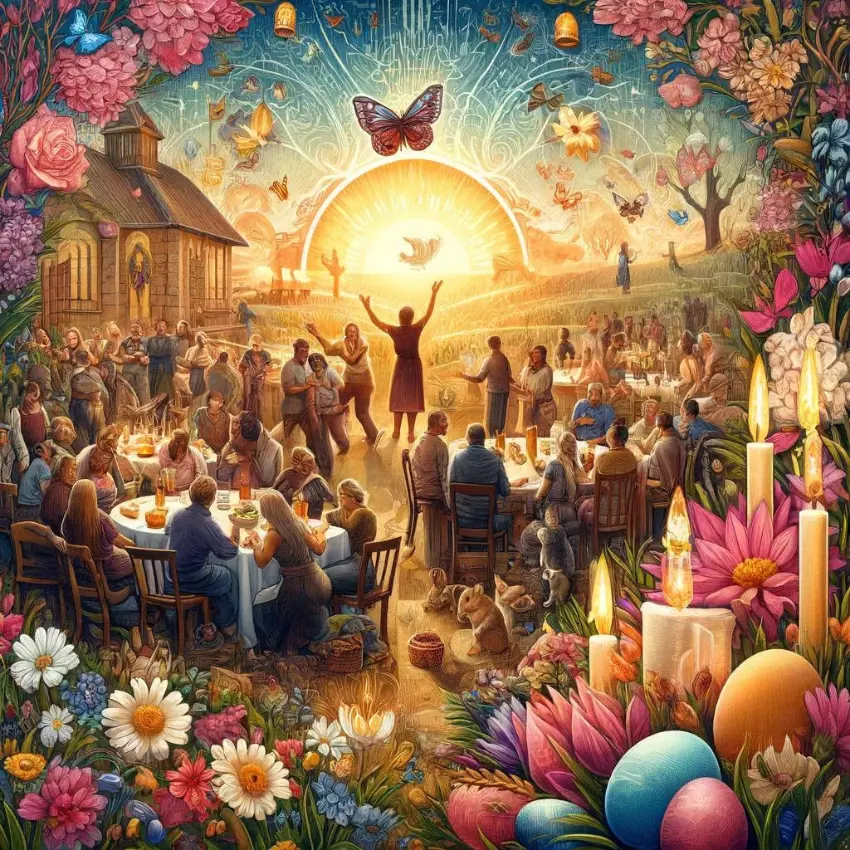
Conclusion: The Eternal Spring of Easter
Easter, with its rich tapestry of history, traditions, and symbols, stands as a beacon of hope, renewal, and joy. From its origins in ancient rites to its modern-day celebrations, Easter invites us to reflect on life’s profound mysteries and the possibilities of renewal and redemption. As we revisit the story of Easter, from its spiritual beginnings to the colorful eggs and parades of today, we’re reminded of the enduring human spirit’s capacity for rebirth and hope. This Easter, let’s embrace the festival’s timeless messages, celebrate the joys of spring and new beginnings, and carry its light into the world.
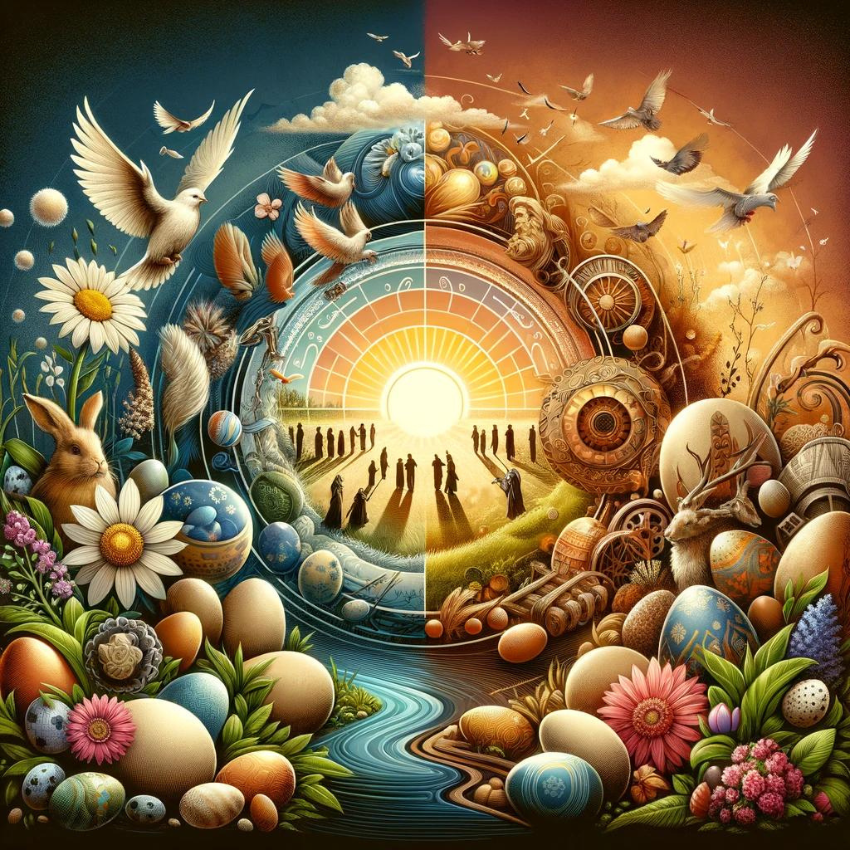
Easter: Frequently Asked Questions (FAQs)
1. What Is Easter and Why Is It Celebrated?
Easter is a Christian holiday celebrating the resurrection of Jesus Christ from the dead, described in the New Testament as occurring on the third day after his crucifixion. It symbolizes the triumph of life over death and hope over despair, embodying themes of renewal and rebirth.
2. How Is the Date of Easter Determined?
Easter’s date varies each year, determined by the lunar calendar: it falls on the first Sunday after the first full moon occurring on or after the vernal equinox. This calculation was established by the Council of Nicaea in 325 AD.
3. What Are Common Easter Traditions?
Common Easter traditions include attending church services, sharing meals with family, egg decorating, egg hunting, and the giving of Easter baskets filled with chocolates and treats. The Easter Bunny is a popular figure associated with the holiday, symbolizing fertility and new life.
4. Why Are Eggs Associated with Easter?
Eggs are associated with Easter as symbols of new life and resurrection. The practice of decorating eggs dates back to ancient times, symbolizing the empty tomb of Jesus and the celebration of new life.
5. Who Is the Easter Bunny and Where Did the Tradition Originate?
The Easter Bunny is a folkloric figure believed to deliver Easter eggs to children. This tradition originated among German Lutherans, where the “Easter Hare” judged children’s behaviors and provided gifts accordingly.
6. What Is the Significance of the Easter Egg Hunt?
The Easter egg hunt is a fun tradition that symbolizes the search for new life and Jesus’ resurrection from the tomb. It’s also a way to celebrate the arrival of spring.
7. Why Do People Wear New Clothes on Easter?
Wearing new clothes on Easter is a tradition stemming from the idea of renewal and rebirth. In the past, it was believed that wearing new clothes on Easter would bring good luck for the coming year.
8. What Foods Are Traditionally Eaten on Easter?
Traditional Easter foods include lamb (representing Jesus, the Lamb of God), eggs, chocolate bunnies, hot cross buns (symbolizing the crucifixion), and Simnel cake, a fruitcake associated with Mothering Sunday in the UK but also enjoyed at Easter.
9. How Do Different Cultures Celebrate Easter?
Easter celebrations vary globally, reflecting diverse traditions. For example, in Greece, people celebrate with fireworks and a midnight church service; in Spain, elaborate processions take place throughout Holy Week; and in Poland, the “Śmigus-Dyngus” or Wet Monday tradition involves playful water fights.
10. What Is the “Holy Week”?
Holy Week is the week preceding Easter and the final week of Lent, beginning with Palm Sunday and including Maundy Thursday (commemorating the Last Supper), Good Friday (commemorating the crucifixion), and ending with Easter Sunday.
11. Can Easter Be Celebrated by Non-Christians?
Yes, many Easter traditions, such as egg decorating and the Easter Bunny, are secular and can be enjoyed by anyone regardless of religious beliefs. Easter also coincides with the spring season, making it a time for universal celebration of renewal.
12. What Is the “Easter Vigil”?
The Easter Vigil is a service held in traditional Christian churches as the first official celebration of the Resurrection of Jesus. Held after sundown on Holy Saturday, it marks the end of Lent and the beginning of Easter Sunday. The service typically includes the lighting of the Paschal candle, scripture readings, baptism of new members, and the Eucharist.









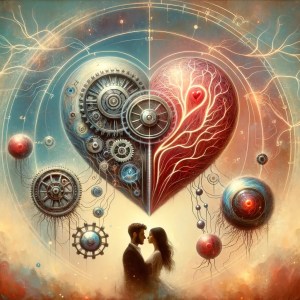
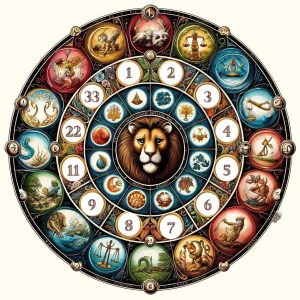
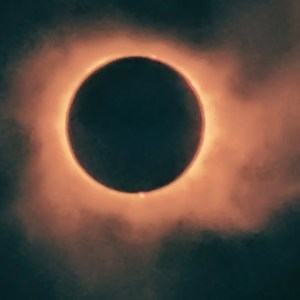




I am not sure where youre getting your info but good topic I needs to spend some time learning much more or understanding more Thanks for magnificent info I was looking for this information for my mission
Thank you for your comment and interest in the sources of our information. We take great care to research thoroughly and provide well-curated content for our readers. If there are specific topics you’re looking to explore further, feel free to reach out. Our Simply Sound Society forum is also a great place to discuss and dive deeper into various subjects. We’re glad to provide information that supports you and your mission!
Great read, really enjoyed your perspective on this!
Thank you so much for your thoughtful comment. I love hearing this. It honestly keeps me motivated to continue! I really just want to make a difference you know? Thanks again!